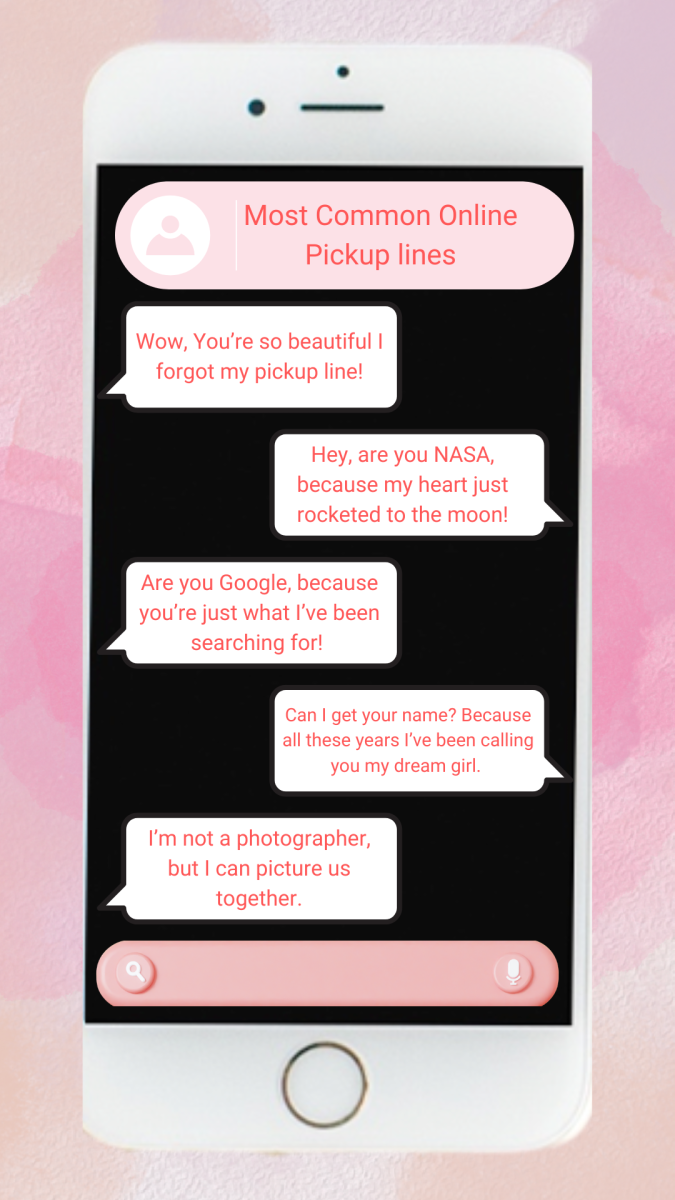Since the advent of the internet, there has been a niche for almost everything. Mom blogs to look at soup recipes hidden under a thick wall of text describing a life story. YouTube channels dedicated to theorizing on films or putting Mentos into Coke. One of the largest niches that has existed since the beginning was the part of the internet devoted to online dating. Sites such as eHarmony, Match.com, and others kicked off an online dating renaissance, with apps like
Tinder, Bumble, and Hinge becoming popular throughout the 2010’s. Because of the adult nature of these sites and apps, teens under the age of 18 had to look elsewhere to meet people and form relationships. Social media apps like Snapchat, Instagram, and others formed the backbone of many young relationships due to the ease of access to the chat functions of these apps, according to pew research.org. Being 18, and now being able to participate in more dating possibilities looks very daunting considering the checkered history of dating sites and apps. Having also experienced Snapchat and Instagram as a way of connecting with people, the introduction of other methods seems all together overwhelming.
Experiencing Snapchat and Instagram as potential means of finding a partner is a very mixed bag. On one hand, most people of my age group have accounts on these apps, making meeting potential almost limitless. On the other hand, I have learned from experience that the people who use these apps to find romance are some of the more unscrupulous people on the internet. Dating apps, on the other hand, have many of the same problems.
While dating apps have the perceived advantage of only being for love and romance, the sad truth is that the best really is already taken. While three in ten younger adults (ages 18-25) have used dating apps, that still leaves 70 percent of eligible people not on dating apps, making the dating pool smaller than the initial look, according to pew research.org.
The main advantage of using social media boils down to ease of access and unrestricted nature behind following and messaging other people. Instagram allows the user to interact with photos posted by other users, giving a transparent look at somebody’s life. This is contrasted by Snapchat, which focuses more on developing relationships through text messaging. Dating apps, on the other hand, are a mixed bag on many fronts.
The dating apps I used were Hinge, Bumble, and Coffee Meets Bagel. The biggest difference from conventional social media apps I noticed was the user interfaces. They were awful. It was extremely difficult to navigate each app, which was in large part to their heavy emphasis on subscriptions. Each app had their own subscription service, whether it be Hinge X, Bumble Premium Plus, or Coffee Meets Bagel Premium. These plans made navigating these apps extremely frustrating, as with every turn I was greeted with a wish to upgrade. Obviously, as dating apps are first and foremost a company, I would expect the premium upgrades to give me access to more features and functions than the basic plan would grant me.
However, since these functions ultimately cost money, people who plan on using dating apps purely for recreation like myself will have to continue to contend with horrible user interface desperately trying to convince users to buy into subscriptions. Instagram and Snapchat invite different challenges altogether. For one, both apps are completely free, and any subscription services are not annoyingly shoved into the user’s face. The main issue with both apps is how they encourage people who already know each other to follow each other.
The algorithm of both apps specifically recommended friends of the user to follow, which leads to a stagnation of new faces being presented to the user, hindering the chances of a romantic relationship forming from either Snapchat nor Instagram. David P. from St. Louis Missouri says his experiences on dating apps are mostly negative. “Ghosting, and never hearing anything back, is one of the biggest problems,” David said. “I think they have leaned into the absolutes regarding dating habits and their evolution into the modern age. You might tend to isolate yourself with what you know and are familiar with.”
While both social media and dating apps provide both pros and cons, at the end of the day, it comes down to preference. Social media provides an aura of comfort, without an easy way to branch out and meet new people.
Dating apps give you the opportunity to meet new people, but with terrible user interfaces and predatory subscription services, they become difficult to use. In the modern era, dating has become a twisted dance of red flags, green flags, and white flags from many people, young and old alike. But stripping that all away, dating is first and foremost about a connection between two human beings. By cultivating connections and growing bonds, we can become better people and grow to reach our true potential.



